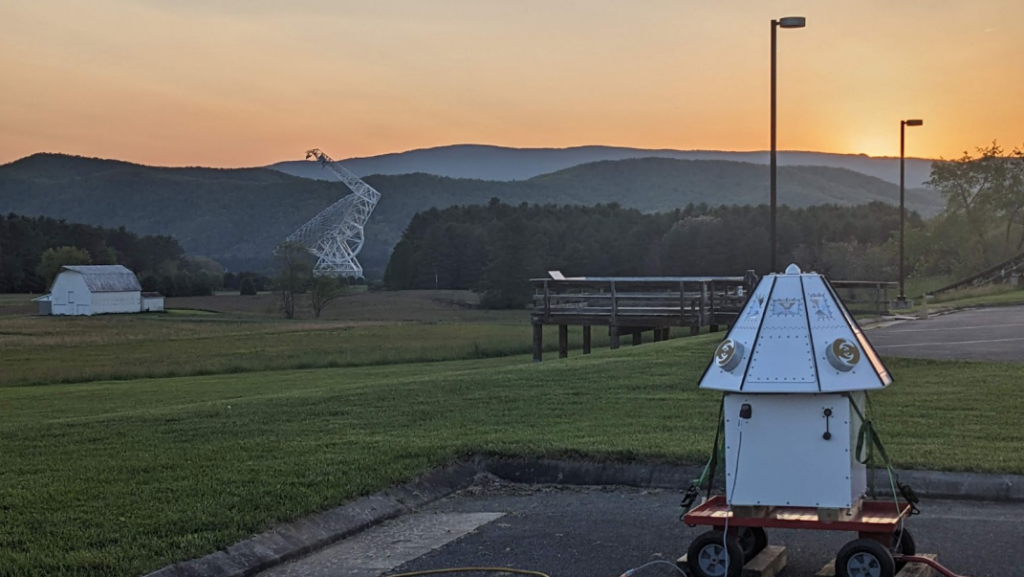AUI will present at the 247th meeting of the American Astronomical Society in Phoenix from January 4-8.
Recent News
ALMA Helps Unmask Monster Black Hole Behind Record-Breaking Cosmic Burst
Astronomers have used the Atacama Large Millimeter/submillimeter Array (ALMA) together with a suite of space- and ground-based telescopes, to study AT 2024wpp, the most luminous fast blue optical transient (LFBOT) ever observed.
Astronomers Make First Radio Detection of Rare Supernova Type, Revealing Secrets of Stellar Death
Astronomers using the U.S. National Science Foundation Very Large Array have captured the first-ever radio signals from a rare class of stellar explosion known as a Type Ibn supernova.
NSF NRAO Leads Critical Spectrum Studies to Safeguard Radio Astronomy

The U.S. National Science Foundation National Radio Astronomy Observatory (NSF NRAO) has received funding to expand its study of an invisible—and crucial—scientific and technological resource: the radio spectrum. This work focuses on key radio frequency bands being considered for repurposing as part of the National Spectrum Strategy announced by the U.S. government.
The radio spectrum is a finite resource. The wavelengths observed by radio astronomers overlap with those used by satellite constellations, WIFI, Bluetooth, and other everyday devices. The NSF NRAO has been working for years to find solutions for sharing and protecting the bands they observe in the radio spectrum from radio frequency interference (RFI). In 2024, NSF NRAO engineers debuted an Advanced Spectrum Monitor (ASM) to test the levels of RFI present at the NSF Green Bank Observatory in Green Bank, West Virginia. The ASM was developed by NSF NRAO engineers at the Central Development Laboratory, located in Charlottesville, Virginia, near the headquarters of the NSF NRAO.
Expanding on this research, the NSF NRAO will use the NSF Very Large Array and the NSF Green Bank Telescope to further analyze the current state of RFI in the 7.125-8.4 GHz bands. NSF NRAO engineers will also commission a series of new Advanced Spectrum Monitors (ASM-2) to test and deploy at the NSF NRAO’s facilities (including the NSF Central Development Lab in Charlottesville, VA) along with other partners who use the radio spectrum in industry, technology, and national defense. The ASM-2 will help protect sensitive radio astronomy, and other activities that use the radio spectrum, by providing real-time directional data on the radio frequency environment from 1-50 GHz.
This work by the NSF NRAO is a critical step in balancing the needs of commercial spectrum users in science, business, industry, and government. As the U.S. moves forward with its National Spectrum Strategy, this project will play a vital role in safeguarding the future of radio astronomy and ensuring continued U.S. leadership in scientific research. “Protecting the radio spectrum is a shared responsibility—one that demands innovation, partnership, and vision. With this new award from the U.S. National Science Foundation, we are advancing the technology that safeguards radio astronomy and building bridges with industry, government, and the broader scientific community,” adds Tony Beasley, Director of the NSF NRAO.
About NRAO
The National Radio Astronomy Observatory (NRAO) is a facility of the U.S. National Science Foundation, operated under cooperative agreement by Associated Universities, Inc.
This news article was originally published on the NRAO website on June 24, 2025.
Recent News
AUI to Attend AAS 247 Conference
AUI will present at the 247th meeting of the American Astronomical Society in Phoenix from January 4-8.
ALMA Helps Unmask Monster Black Hole Behind Record-Breaking Cosmic Burst
Astronomers have used the Atacama Large Millimeter/submillimeter Array (ALMA) together with a suite of space- and ground-based telescopes, to study AT 2024wpp, the most luminous fast blue optical transient (LFBOT) ever observed.
Astronomers Make First Radio Detection of Rare Supernova Type, Revealing Secrets of Stellar Death
Astronomers using the U.S. National Science Foundation Very Large Array have captured the first-ever radio signals from a rare class of stellar explosion known as a Type Ibn supernova.
